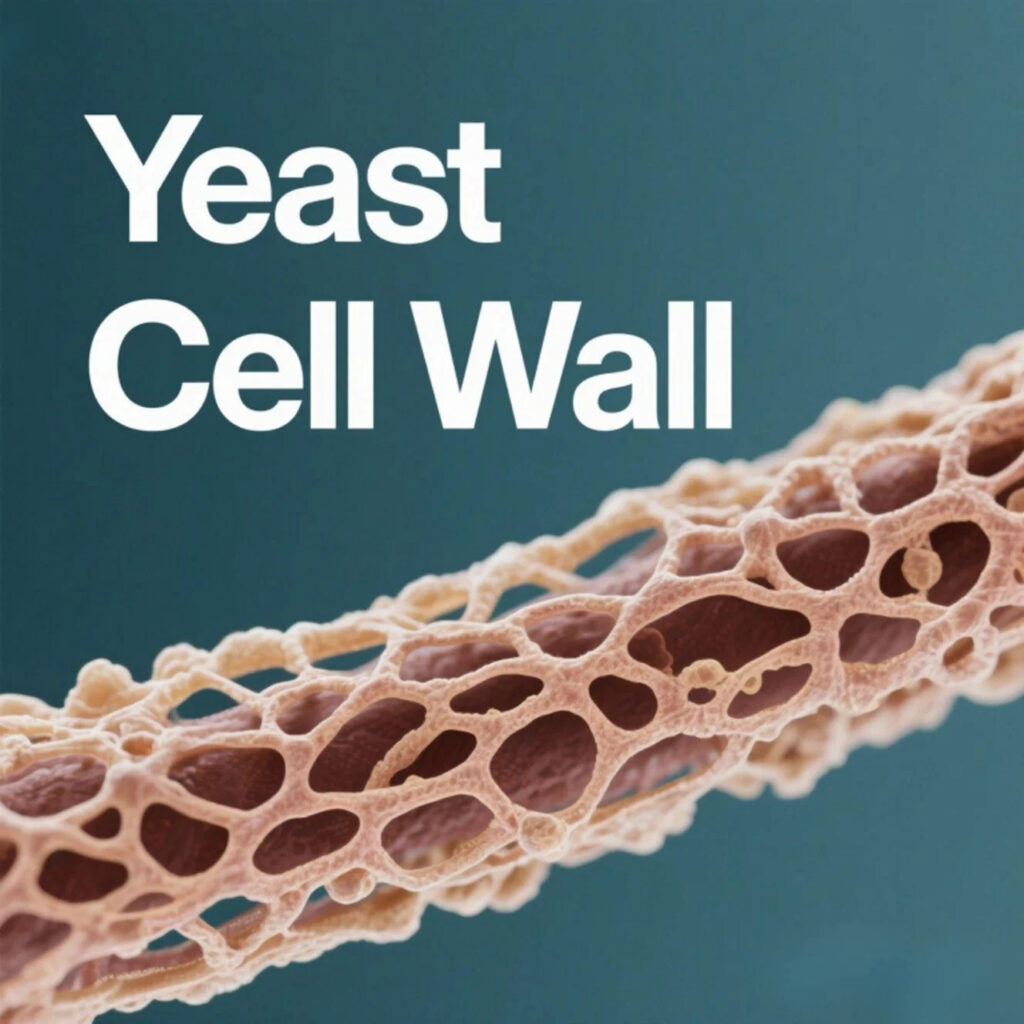Yeast cell walls have shown great potential which absorb mycotoxins in animal feed, which is an important aspect of ensuring animal health and feed quality. Here’s a detailed look at how they work, their effectiveness, and related considerations:
1. Structure and composition of yeast cell walls
- Structure: Yeast cell walls are complex structures that consist of multiple layers. The outer layer is mainly composed of mannoproteins, while the inner layer contains a network of β – glucans and chitin.
- Composition:
- β – glucans: These are polysaccharides with a unique helical structure. They have a large surface area and can form hydrogen bonds and other non – covalent interactions with mycotoxins.
- Mannans: Mannans are also important components of the yeast cell wall. They can bind to certain types of mycotoxins through specific molecular interactions.
2. Mechanism of mycotoxin absorption
- Physical adsorption: The porous structure of yeast cell walls provides a large surface area for mycotoxins to adhere to. Mycotoxins can be physically trapped within the pores and on the surface of the cell wall. For example, the three – dimensional structure of β – glucans allows them to entrap mycotoxins such as aflatoxins, which are planar molecules.
- Chemical binding: Yeast cell wall components can form chemical bonds with mycotoxins. Mannans can interact with mycotoxins through hydrogen bonding, hydrophobic interactions, and electrostatic forces. For instance, some mycotoxins have polar functional groups that can form hydrogen bonds with the hydroxyl groups on the mannans.
3. Effectiveness against different mycotoxins
- Aflatoxins: Yeast cell walls are quite effective in binding aflatoxins. Aflatoxins are highly toxic and carcinogenic mycotoxins produced by Aspergillus fungi. The β – glucans and mannans in yeast cell walls can bind to aflatoxins, preventing their absorption in the animal’s gastrointestinal tract. Studies have shown that adding yeast cell wall – based mycotoxin binders to feed can significantly reduce the levels of aflatoxins in the bloodstream of animals.
- Zearalenone: Zearalenone is an estrogenic mycotoxin that can cause reproductive problems in animals. Yeast cell walls can also bind to zearalenone to some extent. The binding mechanism may involve the interaction between the chemical groups of zearalenone and the functional groups on the yeast cell wall components.
- Deoxynivalenol (DON): Although the binding of DON by yeast cell walls is relatively less efficient compared to aflatoxins, they still show some ability to reduce the bioavailability of DON. DON is a trichothecene mycotoxin that can cause feed refusal and immunosuppression in animals. The complex structure of yeast cell walls may provide some sites for DON binding, but more research is needed to optimize the binding efficiency.
4. Advantages of using yeast cell walls as mycotoxin binders
- Natural and safe: Yeast cell walls are natural products, and they are generally considered safe for animals. They do not introduce any harmful chemicals into the feed, which is beneficial for both animal health and the quality of animal products.
- Nutritional benefits: In addition to mycotoxin binding, yeast cell walls can also provide some nutritional value. β – glucans can stimulate the immune system of animals, enhancing their disease resistance. Mannans can act as prebiotics, promoting the growth of beneficial bacteria in the gut.
- Stability: Yeast cell walls are relatively stable under different feed processing conditions, such as pelleting. They can maintain their mycotoxin – binding ability even after exposure to high temperatures and mechanical stress during feed manufacturing.

